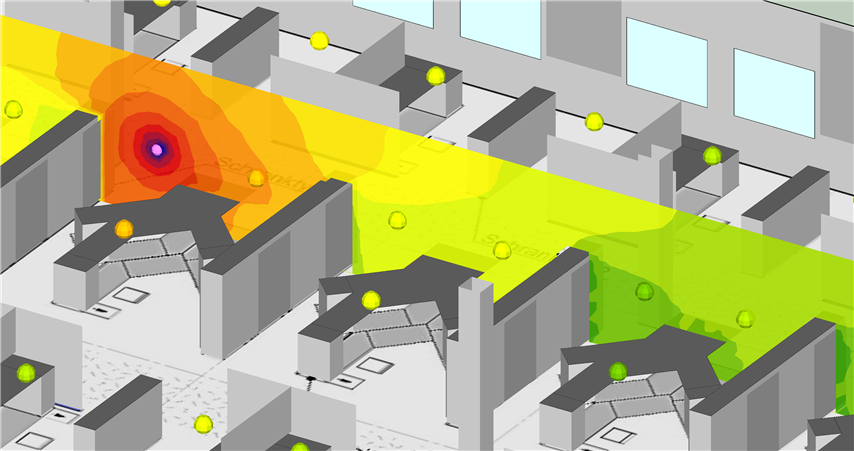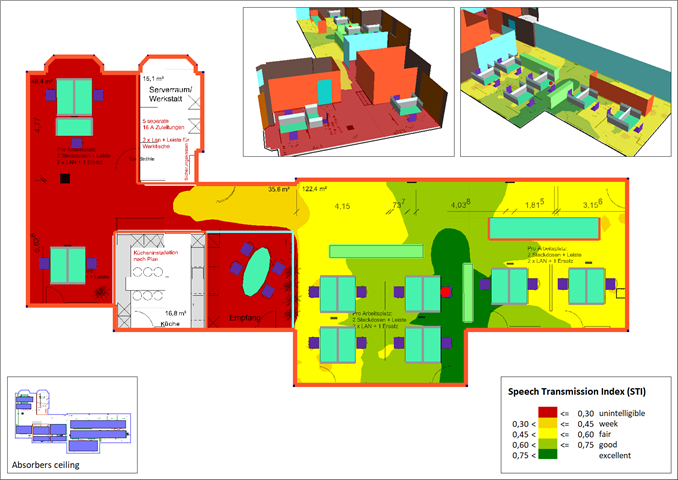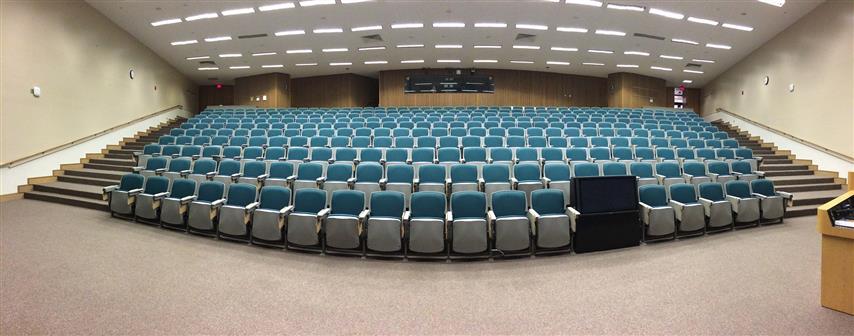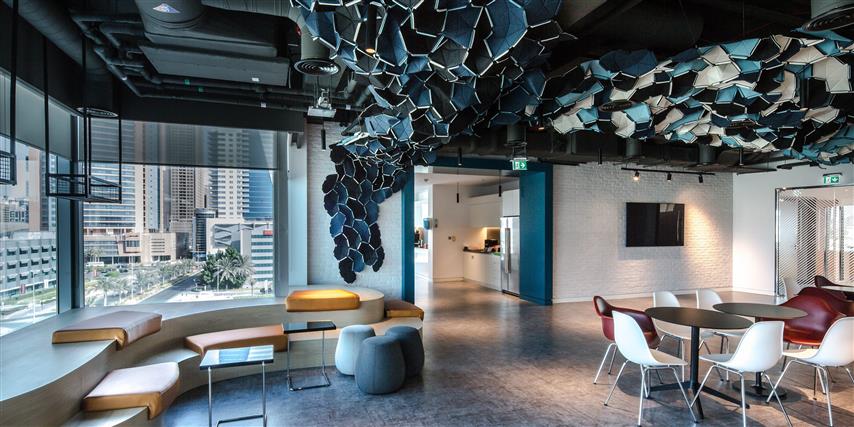Noise Mapping Specialist SoundPLAN Launches Newly Developed Room Acoustics Module
Noise mapping software specialist SoundPLAN GmbH has launched a newly developed room acoustics module, available in its world-leading software SoundPLANnoise. The software has incorporated noise calculations for indoor environments for many years, but with this module update it is now also possible to calculate sophisticated acoustic scenarios with arbitrary geometries. The module is designed for application in the fields of occupational health and safety, and room acoustics. The specialized software supports engineers, architects, and planners in the design process. Modern architecture is based upon new and innovative technologies and is characterized by exposed concrete and glass facades and open room concepts. This poses a great challenge to achieving pleasant acoustics that are suitable for the intended use of the room, and failure to do so often results in annoyance, stress, and poor work performance.
Possibilities and Scope of Functions
The algorithm used for this purpose is the sound particle diffraction (SPD) method, which is an extension of the well-known and frequently used ray-tracing method. It allows the user to analyze and evaluate the acoustic properties of a room and any room acoustic optimization measures extensively and in detail.

In addition to the frequency-dependent sound pressure level values, all commonly used room acoustic parameters according to ISO 3382, such as reverberation time, Definition—D50, and speech decay rate can be calculated. It is also possible to calculate the increasingly popular speech transmission index (STI) and listen to how recordings sound in a room (auralization). By storing the corresponding evaluation criteria according to VDI 2569 and DIN 18041, the user can quickly check whether the room acoustics meet the selected requirements.

The room acoustics module is designed for use across a range of room types, where the demands on the acoustic quality may vary greatly. This includes open plan offices, conference and lecture theatres, concert halls, restaurants, and doctors’ practices. The program also has features to help accommodate electro-acoustics. In addition to frequency-dependent directivities, all sources have a delay setting, and the Source Library within the software contains a selection of official specifications and loudspeakers.
How Does It Work?
For the interior calculation, in addition to the geometry, the user simply enters the essential acoustic properties (absorption coefficients, scattering coefficients if available, and transmission coefficients) of the boundary surfaces and furnishings. A new interface to the Sarooma acoustics database gives direct access to data from over 3,200 commercially available sound-absorbing acoustic products from many well-known manufacturers. This, together with the improved, intuitive room editor, leads to easy and fast model creation. A detailed overview of the results, and the possibility of producing meaningful graphics such as color maps of all room acoustic parameters, simplifies the comparison and evaluation of the measures and makes it easier to communicate results with customers.
Proof of Principle
The calculation is based on state-of-the-art scientific methods. In the sound particle model, the source emits sound particles, taking into account the directivity. These sound particles carry different energies per frequency band.1 On their way through the acoustic landscape, they are reflected specularly or diffusely (according to Lambert’s distribution) at boundary surfaces or obstacles, depending on the surface. When the sound particles pass through receivers on their flight, these detect the time and energy. In this way, an energetic impulse response is formed in the course of the simulation. From this, all further room acoustic quantities can be calculated.
In the sound particle method with uncertainty-based diffraction, particles are additionally deflected to a greater or lesser extent depending on the bypass distance at diffraction edges. This approach, empirically derived from Fraunhofer diffraction, allows the extension of the sound particle high-frequency approximation to lower frequencies and has already been able to offer advantages in numerous studies/investigations. For more information about the room acoustic module and SoundPLANnoise software, visit: www.soundplan.eu, email SoundPLAN’s distributor in Canada and the USA at forschner@navcon.com, or contact the team at SoundPLAN’s headquarters at marketing@soundplan.de. For press enquiries please contact Michelle Eastty at Ceris Burns International, t: +44(0)1506 857790, e: michelle@cbipr.com,w: www.cbipr.com.


About SoundPLAN
SoundPLAN GmbH in Backnang, Germany, is an engineering company with the main focus on noise control and software development. Its interdisciplinary team consists of engineers, geographers, physicists, and computer science specialists. The team generates cutting edge engineering solutions delivered to the global market in the format of our SoundPLAN software. Its SoundPLAN noise modeling software has maintained the status of the market leader for more than 35 years.
Note
- U. M. Stephenson, “An energetic approach for the simulation of diffraction within ray tracing based on the uncertainty relation.” ACUSTICA United with Acta Acustica 96, no. 3 (2010): 516-535.


